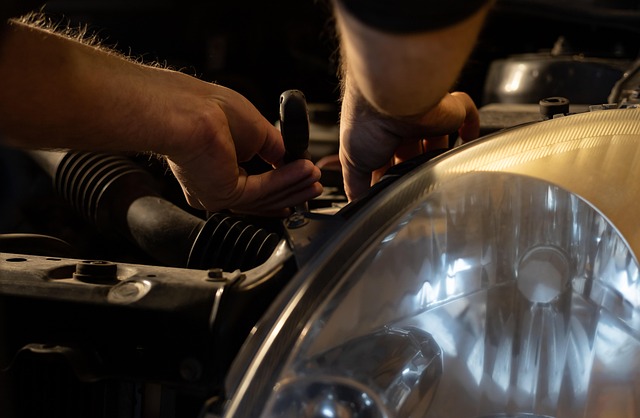Mercedes Unibody Repair: OEM Training Ensures Quality and Longevity
Mercedes unibody repair is a specialized automotive field focused on restoring and maintaining the s…….
Welcome to an in-depth exploration of a critical aspect of automotive engineering and restoration—Mercedes Unibody Repair. This article aims to guide readers through the intricate world of repairing and restoring the unibody structure found in modern Mercedes-Benz vehicles. The unibody, a significant component in vehicle safety and structural integrity, demands meticulous care during repair processes. We will delve into various facets, from understanding the basic concept to global implications, economic factors, technological innovations, regulatory frameworks, and future predictions. By the end of this article, readers should have a comprehensive grasp of Mercedes unibody repair, its significance, and its evolving landscape.
Definition: Mercedes Unibody Repair refers to the specialized process of restoring and reinforcing the structural integrity of a Mercedes-Benz vehicle’s unibody after damage or deformation. The unibody, a revolutionary design concept introduced in modern automobiles, is a rigid structure that combines the functions of the frame and body, providing both safety and structural support.
Core Components:
Unibody Structure: This consists of various components such as crossmembers, longitudinal members, and lateral members, all designed to withstand crash forces and protect occupants.
Welding and Fastening: Repairs often involve precision welding and the use of advanced fastening techniques to reassemble the unibody after damage.
Computerized Analysis: Modern repair facilities utilize 3D scanning and computer-aided design (CAD) software to accurately assess and measure the unibody, ensuring precise repairs.
Material Considerations: Repairs may require the use of specialized metals or composite materials to match the original strength and corrosion resistance of the unibody.
Historical Context:
The concept of an integrated unibody structure has evolved over decades, driven by safety standards and advancements in automotive design. Mercedes-Benz played a pivotal role in popularizing this design philosophy with its robust and lightweight unibody systems. The brand’s reputation for precision engineering and safety made it a benchmark for other manufacturers. As a result, understanding and mastering Mercedes unibody repair has become essential in the global automotive industry.
Significance:
Mercedes unibody repair has a profound global impact, influenced by regional variations in automotive markets and regulatory standards.
International Influence:
Key Trends:
Growing Demand: The rising popularity of Mercedes-Benz vehicles globally has led to a corresponding increase in the need for specialized unibody repair services.
Specialization: Repair facilities are becoming increasingly specialized, focusing on advanced training and equipment to handle complex unibody repairs.
Digitalization: The adoption of digital technologies, such as 3D scanning and CAD software, is streamlining the repair process, improving accuracy, and reducing costs.
Regional Variations:
The economic landscape surrounding Mercedes unibody repair is dynamic and multifaceted, influenced by market trends, investment, and regulatory factors.
Market Dynamics:
Investment Patterns:
Economic Impact:
Role in Economic Systems:
Technological innovations have revolutionized Mercedes unibody repair, improving efficiency, accuracy, and safety.
Significant Advancements:
3D Scanning and CAD Software: These tools enable precise measurements and virtual repairs, reducing the time and cost of traditional manual assessments.
Advanced Welding Techniques: Laser and robotic welding systems offer improved precision, faster cycles, and enhanced structural integrity.
Composites and Specialized Materials: The development of lightweight composite materials and specialized metals allows for stronger, more corrosion-resistant unibody repairs.
Computerized Testing: Simulated crash tests and dynamic analysis software help technicians anticipate repair outcomes and ensure safety standards.
Impact on Repair Processes:
Future Potential:
The regulatory environment plays a critical role in shaping Mercedes unibody repair practices globally.
Key Policies and Regulations:
Safety Standards: Organizations like Euro NCAP (European New Car Assessment Program) and NHTSA (National Highway Traffic Safety Administration) set minimum safety requirements for vehicles, including unbody structural integrity.
Environmental Regulations: Strict emission standards and waste management guidelines impact the choice of materials and repair methods in some regions.
Warranty Policies: Mercedes-Benz’s warranty terms and conditions influence how repairs are handled, especially when it comes to coverage and authorized service centers.
Regulatory Influence:
Despite its advancements, Mercedes unbody repair faces several challenges and criticisms that demand attention and innovative solutions.
Main Challenges:
Specialized Skills Gap: The complexity of unbody repairs requires highly skilled technicians, but the industry struggles with a shortage of qualified professionals.
Cost and Accessibility: Repairs can be expensive, especially for specialized work, making them less accessible to some vehicle owners.
Supply Chain Disruptions: Global supply chain issues can impact the availability of original equipment parts (OEP), leading to delays and increased costs.
Criticisms and Solutions:
Training Programs: Establishing comprehensive training programs in collaboration with manufacturers can help address the skills gap by educating a new generation of technicians.
Affordability Initiatives: Repair facilities can offer flexible payment options, loyalty programs, or discounted rates for certain services to make repairs more accessible.
Resilient Supply Chains: Developing robust supply chain strategies, including local sourcing and inventory management, can mitigate disruptions.
Real-world case studies provide valuable insights into the successful execution of Mercedes unbody repair projects.
Case Study 1: Global Unbody Repair Facility Network
Mercedes-Benz established a global network of specialized repair facilities, ensuring consistent quality across regions. This strategy involved:
Lessons Learned:
Case Study 2: Community-Based Repair Initiative
A community-focused initiative aimed to provide affordable unbody repair services in underserved areas. Strategies included:
Outcomes:
The future of Mercedes unbody repair is shaped by emerging trends, technological advancements, and evolving customer expectations.
Potential Growth Areas:
Sustainable Repairs: With increasing environmental consciousness, the industry will focus on eco-friendly materials and processes, reducing waste and emissions.
Digital Twin Technology: Creating digital replicas of vehicles for predictive maintenance and virtual repairs could revolutionize unbody repair planning.
Remote Expertise: Utilizing remote collaboration tools, experts can assist technicians in complex cases, improving global access to specialized knowledge.
Emerging Trends:
Strategic Considerations:
Mercedes unbody repair is a dynamic and critical aspect of automotive engineering, evolving alongside technological advancements and global standards. As vehicles become more complex and safety regulations tighten, the demand for proficient repair services will only increase. The industry’s future success hinges on embracing innovation, addressing skill gaps, and adapting to emerging trends.
By delving into the intricacies of unbody repair, we have uncovered a fascinating world where precision engineering meets global collaboration. As technology continues to advance, the Mercedes unbody repair landscape will continue to transform, ensuring that vehicles remain safe, reliable, and environmentally sustainable. This article aims to empower readers with a comprehensive understanding of this essential automotive service.
Q1: How do I know if my Mercedes needs unbody repair?
A1: Signs may include visible damage to the vehicle’s structural components, irregular body panel gaps, or unusual noises during driving. A professional inspection is recommended to determine the extent of any damage.
Q2: What makes Mercedes unbody repairs different from regular auto body work?
A2: Mercedes unbody repairs focus specifically on the vehicle’s integral unibody structure, ensuring safety and structural integrity. These repairs demand precision welding, specialized materials, and advanced computer-aided design to match the original specifications.
Q3: How can I find a qualified technician for my unbody repair?
A3: Reputable auto repair shops with experience in Mercedes vehicles are an excellent starting point. Online reviews, recommendations from automotive forums, and certified dealers can also help identify qualified technicians.
Q4: Are there any environmental considerations in unbody repair?
A4: Yes, environmental regulations play a significant role. Repair facilities must adhere to guidelines regarding waste management, emissions control, and the use of eco-friendly materials whenever possible.
Q5: Can AI and IoT revolutionize Mercedes unbody repair?
A5: Absolutely! AI can automate data analysis and predictive maintenance, while IoT sensors can provide real-time vehicle health updates, enabling proactive repairs and enhancing overall fleet management.

Mercedes unibody repair is a specialized automotive field focused on restoring and maintaining the s…….

Mercedes vehicles renowned for elegant design and innovative engineering feature a lightweight yet r…….

Mercedes unibody repairs require specialized knowledge and advanced equipment due to their intricate…….

Mercedes unibody construction, known for precision and quality, uses advanced materials and engineer…….